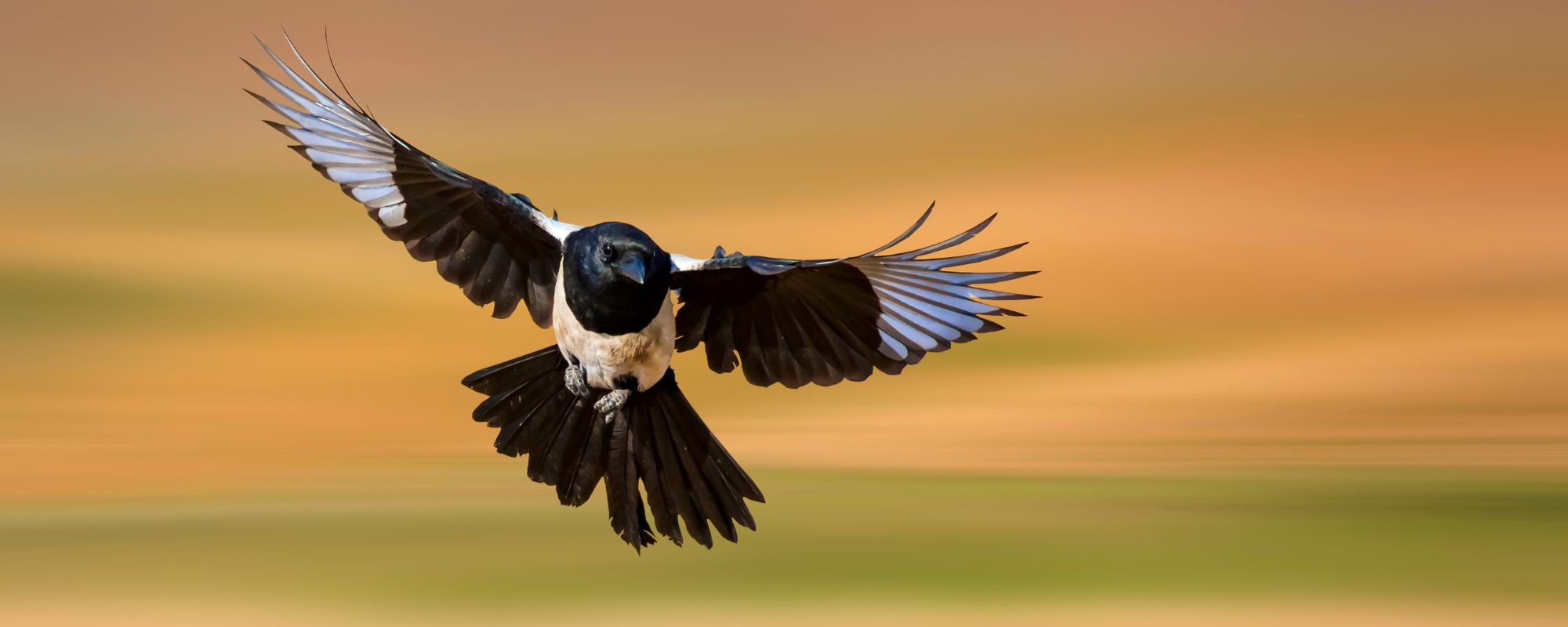
The common magpie is an intelligent hooligan
with shiny feathers and exquisite beauty.
Name
- Scientific name: Pica pica
- Spanish: Urraca común
- Catalan: Garsa
- Euskera: Mika
- Galician: Pega
Classification
- Class: Birds
- Order: Songbirds
- Family: Corvidae
- Species: Eurasian Magpie
Degree of protection of the eurasian magpie
Worldwide
The eurasian magpie is an abundant animal and is not protected.

In Spain
The magpie is not protected and is a game species. This means that it can be hunted.
In Catalonia
Same as in Spain.
Magpie distribution map
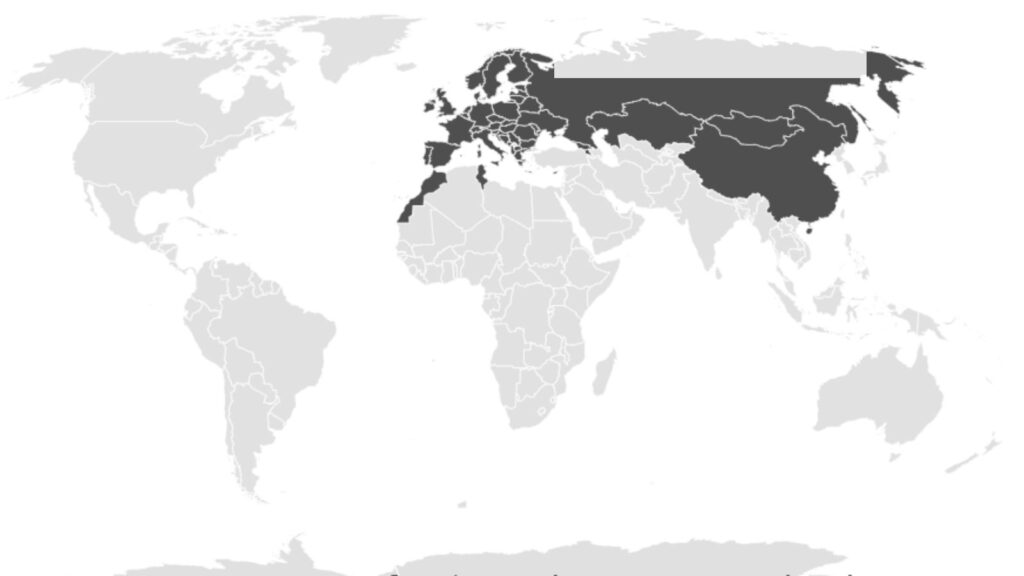
Distribution:
The magpie’s range extends across the temperate zone of Eurasia. It also lives in North Africa.
It is sedentary and only in areas with very low temperatures during the winter it migrates to less hostile places.
Eurasian magpie habitat

The magpie mainly inhabits open landscapes with meadows, shrubs and clusters of trees. It is found both in the lowlands and in the mountains.
It seeks proximity to humans, as their presence protects it from predators and ensures easy access to food: the food scraps we throw away.
Nutrition

Magpies are omnivorous
Meat:
- Insects and their larvae
- Worms
- Spiders
- Snails
- Amphibians
- Lizards
- Mice
- Hatchlings, eggs, small birds
- Carrion
Vegetable foods:
- Seeds
- Fruits
- Mushrooms
Any leftover of human food.
How does the magpie eat?

It is especially resourceful when turning stones (up to about 10 cm in size). The magpie also picks fruit directly from the trees.
Before eating wasps, it crushes them completely with its beak.
Magpies create food stores throughout the year. To prevent other animals from stealing them, they hide the food in different places.
Magpies regurgitate the part of the food they cannot digest in the form of pellets.
Social life of the magpie
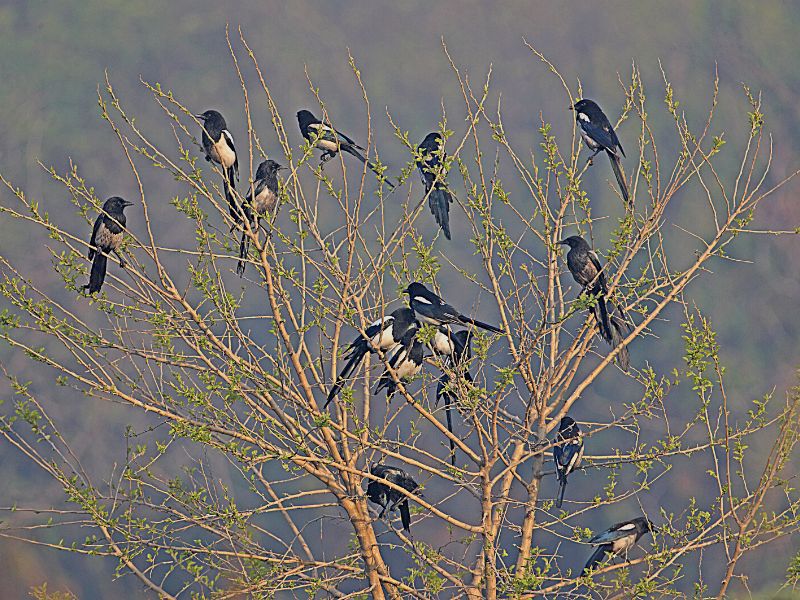
Social animals
The magpie lives in two different social forms.
During the breeding season, breeding pairs live alone in their territories.
Unpaired birds live in groups with a strict hierarchy. In winter, all the magpies in the area join together in flocks.
They are very cheerful.
Magpie reproduction

Flocks of youngsters
The magpie reaches sexual maturity in the first autumn of its life. It becomes a member of a flock. In the spring only half of the young reproduce.
Pair formation
In autumn the future couple begins to spend more and more time together until they both feel close.
They start the inspection of possible nesting sites. The female often indicates possible nest sites by flapping her wings.

The nest
The pair spends up to 40 days building the nest. But it is often «confiscated» by birds of prey and the couple has to start all over again.
Eggs
In March / April the female lays 4-7 eggs. She incubates them on her own while the male looks after her and defends the territory.
Often the magpie’s nest ends up being plundered by other corvids, cats, martens or even humans. Then the couple starts with the whole ritual again.
Magpie hatchlings

Magpies are born naked and with their eyes closed. For 12 days the mother stays with them and the father brings food for the whole family.
With 24 to 30 days the hatchlings leave the nest for the first time. They still don’t know how to fly well and their parents continue to bring them food and protect them.
At about 45 days the young birds begin foraging on the ground on their own, but remain dependent on the adult birds for about three more weeks.
Therefore, if you find small magpies on the ground, you do not need to do anything. Their parents take care of them.
How many years can an eurasian magpie live?
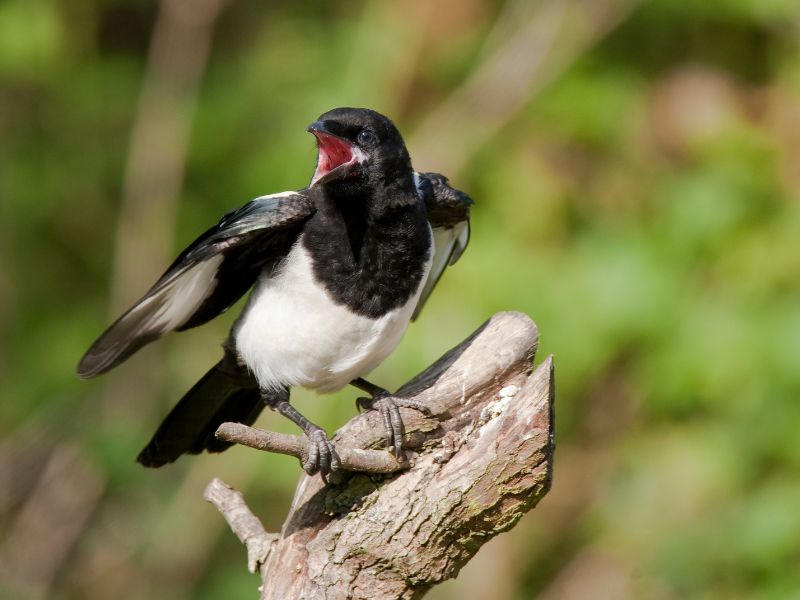
The magpie can live up to 16 years, but due to its numerous natural predators, in the wild it usually does not exceed 3 years.
Predators
- Goshawk
- Buzzard
- Raven
- Marten
- Genet
- Owls
- Falcons
- Humans (the magpie is a game species)
Learn amazing things about the eurasian magpie.
- Does it steal jewelry?
- Is it intelligent?
- Can it talk?
You will learn all this and much more with us. Download the notebook.
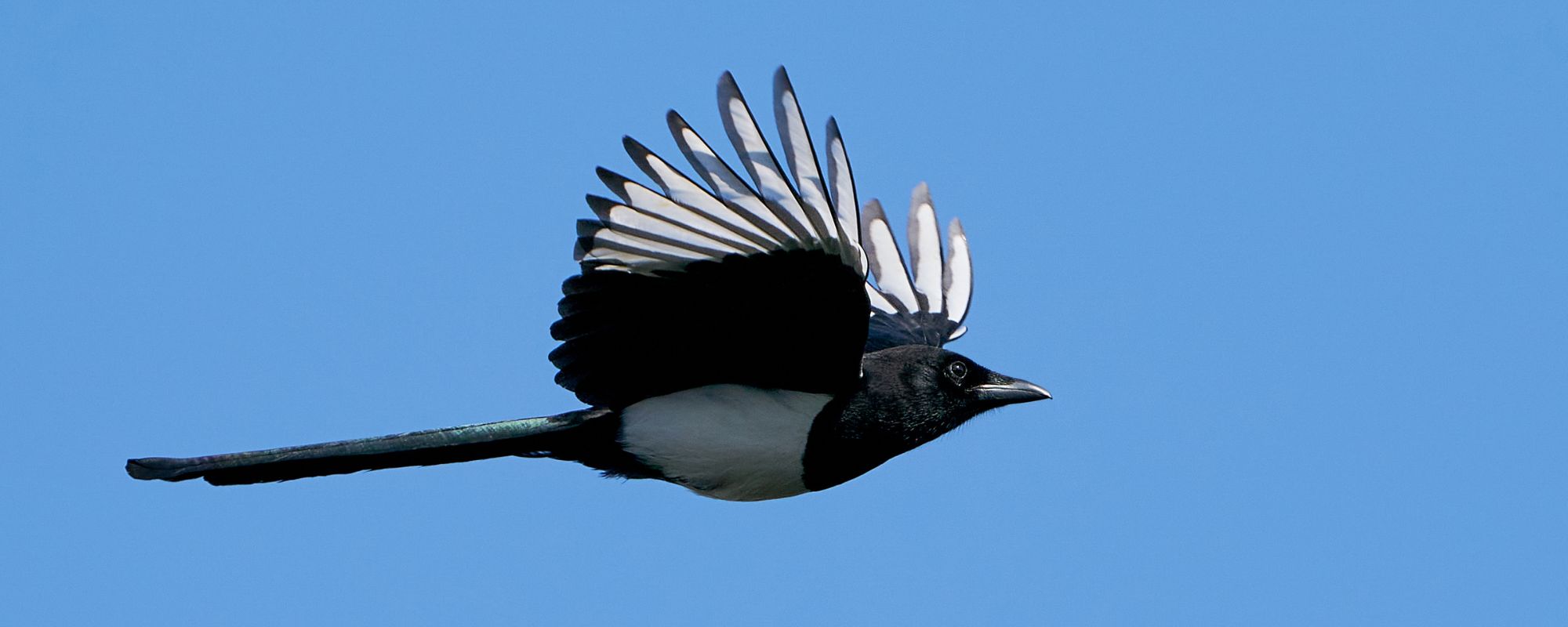
Magpies have striking similarities to humans
in many aspects of their lives. Enjoy its beauty and be amazed by its intelligence.
